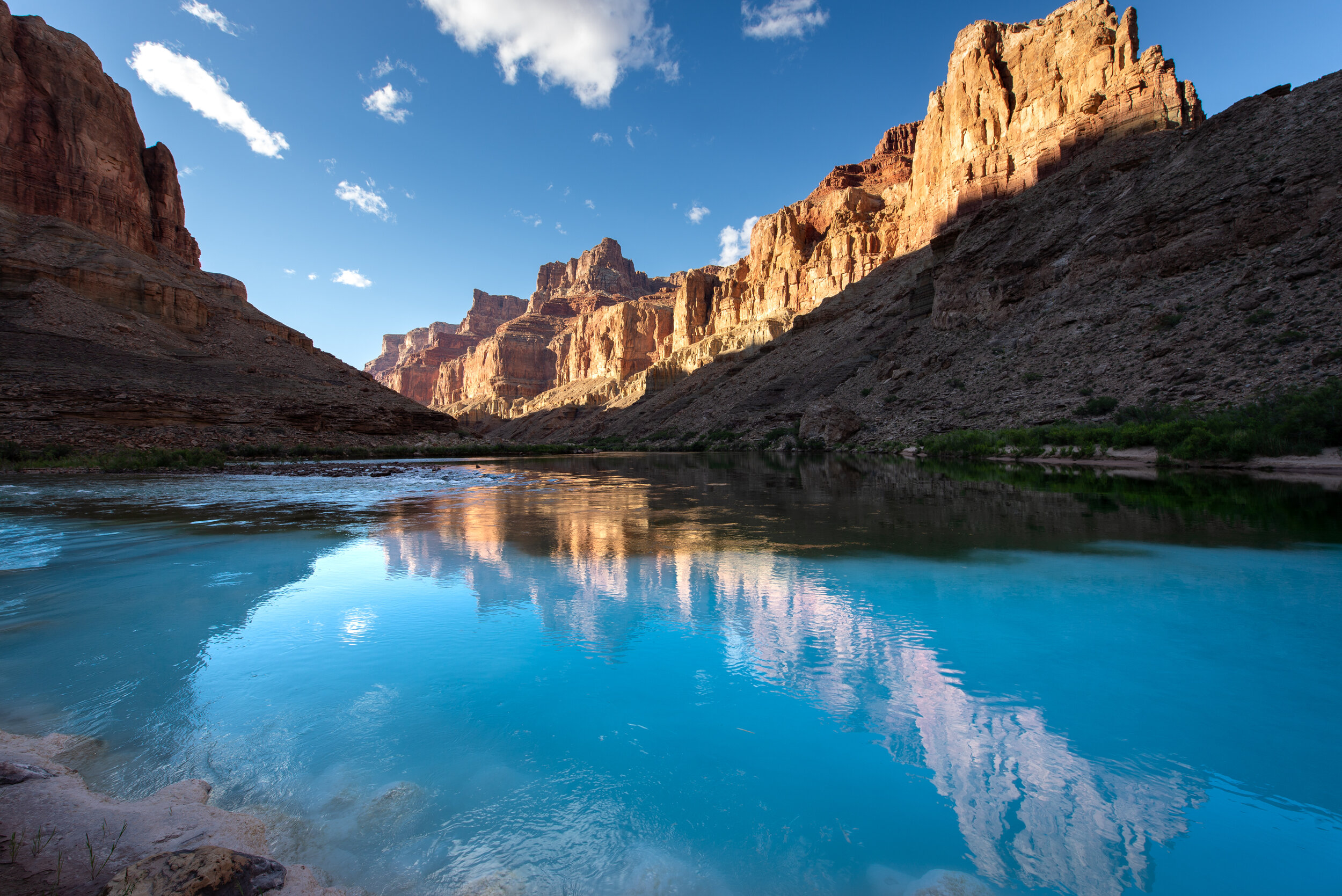Canyons and Catclaw
(Hopi, Zuni, Navajo, Southern Paiute, Havasupai, Hualapai, and Yavapai-Apache Land)
It was 20 years between my first trip to Grand Canyon and my second. I was reluctant to take the job. The 2 things I knew about Grand Canyon were that it was spectacular and that it was crowded. I was leaving Lava Beds National Monument, where the annual visitation is around 100,000. It feels truly remote, visitors have to really make an effort to get there, employees become like family. The Canyon averages more than 6 million annual visitors. It has a K-12 school, a post office, a bank, a grocery store, and hotels and restaurants. I was reassured by my supervisor that I’d be working at Desert View on the east side of the South Rim. Only a million annual visitors and no visitor center to staff.
A snowy sunrise on my first morning at Desert View.
It snowed my first morning. I walked through the predawn glow to watch the sun rise over the sinuous gash cut by the Little Colorado River. A few weeks later, having risen once again before dawn in the snow, my legs carried me to the place where the Little Colorado meets its namesake. The Confluence is a sacred place to several of the 11 tribes (Hopi, Navajo, Zuni, Havasupai, Hualapai, Yavapai-Apache, and 5 bands of Southern Paiute) that are traditionally associated with the Canyon. Ancient water trickles through the layers until it hits the impermeable Bright Angel Shale. Then it travels through porous limestone, absorbing calcium carbonate, until it finds an escape route. Rimstone dams form as the minerals fall out of solution. The ivory colored river bed enhances the water’s turquoise hue. Where it meets the sometimes blue-green, sometimes green-blue, sometimes red of the Colorado the two willful rivers flow shoulder to shoulder for a time before their colors swirl together. This is how I learned that the real beauty of Grand Canyon is not in the view from the rim, but in places hidden away deep in the depths. Places that require hardship and toil to access.



When I left Grand Canyon 2 seasons later for a permanent job I had been on nearly every named trail accessible by Subaru and experienced many powerful, hidden places. I took a 2 year hiatus from the park service, spending most of that time on the craggy Oregon Coast. I explored many beautiful places there with my partner, Ceili, but I could always feel the Canyon pulling at me like a gentle undercurrent. So when I had had enough of my 65 hour/week job it felt obvious that, as long as Ceili would go, I would return to Grand Canyon.





Our cabin on the North Rim has 2 rooms. It was built in the early 1930s as part of the Grand Canyon Lodge. When the nights get colder toward the end of August we spend a fair amount of time trying to find and fill the holes where mice get in. We can watch the sun set over Transept Canyon from both rooms. Our cabin is surrounded by others that house the beautiful community of people who dedicate themselves to learning from and learning about the Canyon. There is a trail only a few steps from our front door and from it we can connect to nearly every trail on the North Rim.
Near the end of the North Rim’s “other” road.
Together we’ve continued to learn more of the Canyon’s secrets. We’ve learned that “route” and “trail” have a number of different meanings and that something that only gets a few sentences in a guidebook can take many hours. We’ve learned that “Redwall break” usually means you’ll be using 4 points of contact. And that sometimes going down is harder than going up. We’ve learned that most things are easier to get to by boat. That travel in the canyon in general is easier by boat. Before the start of our second season we retraced the route of my first Grand Canyon backpacking trip. When we arrived at the confluence we saw the Little Colorado running red with flood water. But over the hours we spent there, our disappointment slowly faded and was eventually replaced by awe. Awe at the cathedral of stone that surrounded us. Awe at the joining of the two important desert rivers. Awe at the weight of the place that is so important to so many. Awe at all the things we will never know about the Canyon.
Some of the places we’ve gotten to know over the years.





